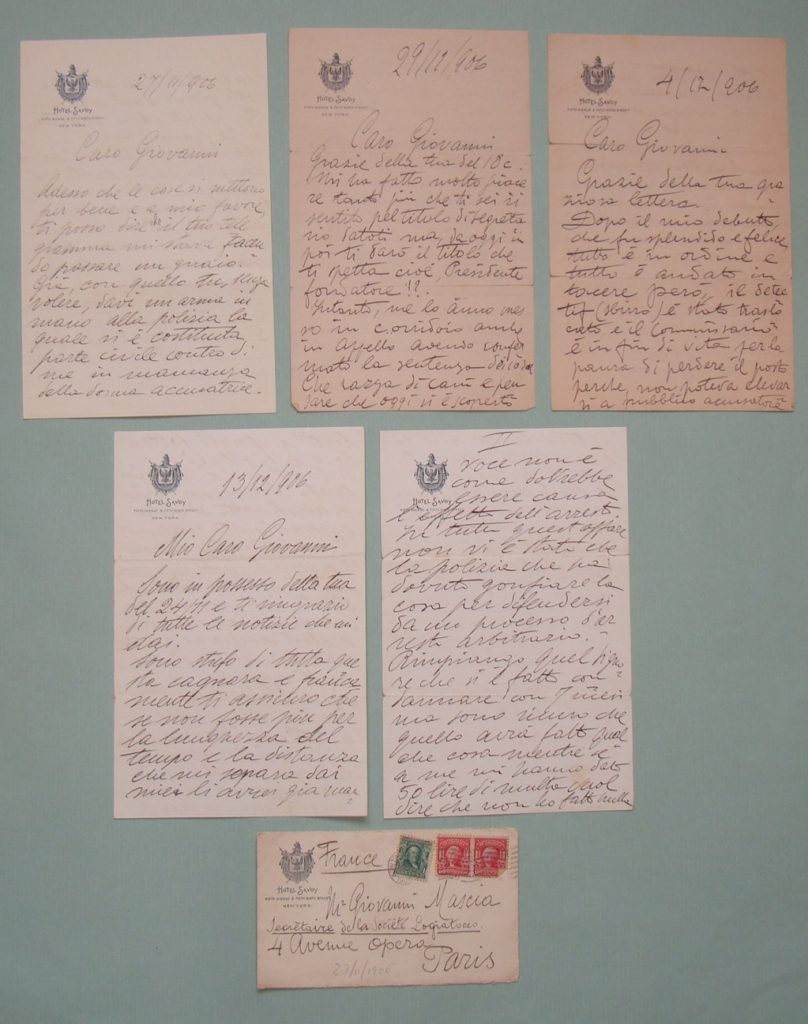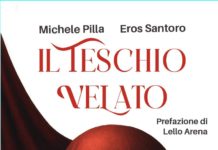Ecco le lettere di Enrico Caruso con Giovanni Mascia. La Biblioteca nazionale Vittorio Emanuele III di Napoli espone per la prima volta la raccolta di lettere autografe appena acquisite, che vanno ad arricchire il fondo Caruso conservato nella sezione Lucchesi Palli (foto).
Per la rassegna Domenica di Carta 2023 l’otto ottobre viene proposta la corrispondenza da New York con l’amico (27 novembre – 13 dicembre 1906) nella quale si trovano riferimenti ai successi al Metropolitan, ma soprattutto alla spiacevole vicenda delle accuse di molestie rivolte a Caruso e sulla disavventura del processo , un’esperienza traumatica per l’artista; dalle lettere emerge la preoccupazione, ma anche il carattere gioioso che non si lascia abbattere .
In esposizione per la prima volta anche una rara edizione di Caricatures by Enrico Caruso del 1922 ( complete collection issued with the approval of the artist) edita dalla Follia di New York acquisita nell’agosto scorso dalla Biblioteca di Napoli.
A rendere unica l’opera è al suo interno un disegno originale a china autografo di Caruso e la dedica autografa del curatore della raccolta, Marziale Sisca ( coautore di”Core ‘ngrato”), al compositore Ernesto De Curtis.
La mostra “Enrico Caruso nei documenti della Lucchesi Palli” allestita in occasione dei 150 anni dalla nascita del tenore racconta l’uomo e l’artista dagli esordi ai grandi successi fino ad arrivare alla morte e alle commemorazioni.
Lettere, telegrammi, cartoline e foto con dedica, gran parte del materiale proviene dal fondo già acquistato dalla Biblioteca Nazionale nel 1973 da un antiquario romano, si tratta della corrispondenza di Enrico Caruso e dei suoi familiari con un amico Angelo Arachite, un personaggio misterioso, mai studiato finora dai biografi carusiani, che ritroviamo, però, citato come uno dei suoi migliori amici a Napoli, nelle biografie più attendibili scritte immediatamente dopo la morte del tenore.
Spiega la direttrice Maria Iannotti: «Il significativo fondo Caruso della Lucchesi Palli, che stiamo cercando di incrementare, si rivela fondamentale per ricostruire in modo rigoroso la biografia del cantante. Ancora una volta la Biblioteca, attingendo alla ricchezza delle sue collezioni, offre una pluralità di prospettive che aiutano a conoscere in maniera più intima l’uomo e l’artista, che ha diffuso la cultura italiana e la canzone napoletana nel mondo. La mostra disegna un ritratto sfaccettato a tutto tondo di Enrico Caruso, rintracciandone anche passatempi ed abilità in altre discipline artistiche».
Dalla mostra emerge la modernità di un grande artista che mette da parte l’eroismo tenorile ottocentesco e si apre a rappresentazioni più borghesi e intime.
L’inaugurazione della mostra con gli interventi della direttrice Maria iannotti e del giornalista Ermanno Corsi si accompagna a un altro evento straordinario la Biblioteca nazionale Vitt.Emanuele III di Napoli spalanca per la prima volta le porte degli “Appartamenti delle Feste dei Borbone”, e nel maestoso Salone di Lettura, l’ ex sala da ballo, per un giorno torna la suggestione delle danze in costume d’epoca
Dopo la visita guidata alla mostra allestita nelle sale della Lucchesi Palli, il soprano Olga De Maio e il tenore Luca Lupoli , accompagnati al pianoforte da Nataliya Apolenskaja, faranno rivivere la magia delle più note arie del repertorio di carusiano. Con intermezzi recitati dall’attore Sasà Trapanese.
Per saperne di più:
https://www.beniculturali.it/evento/a-napoli-mostra-concerto-e-danze-per-caruso-riapre-il-salone-delle-feste-della-biblioteca

Naples National Library: here are newly acquired Caruso letters. The artist writes to friend Giovanni Mascia about his success at the Metropolitan and the harassment trial
Here are Enrico Caruso’s letters with Giovanni Mascia. The Vittorio Emanuele III National Library in Naples is exhibiting for the first time its newly acquired collection of autograph letters, which add to the Caruso collection kept in the Lucchesi Palli section.
For the Domenica di Carta 2023 exhibition, the correspondence from New York with his friend ( from November 27th to December 13th, 1906) is proposed, in which there are references to the successes at the Metropolitan, but above all to the disagreeable affair of the accusations of harassment made against Caruso and on the misadventure of the trial , a traumatic experience for the artist; the letters reveal the concern, but also the joyful character that does not let it get him down.
Also on display for the first time is a rare 1922 edition of Caricatures by Enrico Caruso (complete collection issued with the approval of the artist) published by Follia of New York acquired last August by the Naples Library.
What makes the work unique is inside an original ink drawing autographed by Caruso and an autograph dedication by the curator of the collection, Marziale Sisca ( co-author of “Core ‘ngrato”), to composer Ernesto De Curtis.
The exhibition “Enrico Caruso in the Lucchesi Palli documents” organised on the occasion of the 150th anniversary of the tenor’s birth tells the story of the man and the artist from his beginnings to his great successes up to his death and commemorations.
Letters, telegrams, postcards and photos with dedications, a large part of the material comes from the fund already acquired by the National Library in 1973 from a Roman antiquarian: the correspondence of Enrico Caruso and his family members with his friend Angelo Arachite, a mysterious person never studied by Caruso biographers, but mentioned as one of his best friends in Naples in the most reliable biographies written immediately after the tenor’s death.
Director Maria Iannotti explains: “Lucchesi Palli’s important Caruso collection, which we are trying to increase, is fundamental for the rigorous reconstruction of the singer’s biography. Once again the Library, thanks to the richness of its collections, offers a plurality of perspectives that help to know in a more intimate way the man and the artist who spread Italian culture and Neapolitan song throughout the world. The exhibition presents a well-rounded, multifaceted portrait of Enrico Caruso that also traces his hobbies and skills in other artistic disciplines”.
The exhibition reveals the modernity of a great artist who leaves aside the heroism of the nineteenth-century tenor and opens up to more bourgeois and intimate representations.
The opening of the exhibition, with speeches by the director Maria Iannotti and the journalist Ermanno Corsi, is accompanied by another extraordinary event. For the first time, the National Library of Naples will open the doors of the “Apartments of the Bourbon Feasts” and, in the majestic reading room, the former ballroom, for one day the suggestion of dances in period costumes will be restored.
After a guided tour of the exhibition set up in the rooms of the Lucchesi Palli, soprano Olga De Maio and tenor Luca Lupoli, accompanied on the piano by Nataliya Apolenskaya, will revive the magic of the most famous arias from the Caruso repertoire. With interludes recited by the actor Sasà Trapanese.
Read more at
https://www.beniculturali.it/evento/a-napoli-mostra-concerto-e-danze-per-caruso-riapre-il-salone-delle-feste-della-biblioteca


![Caruso 1906 con busta viaggiata[111479]](https://www.ilmondodisuk.com/wp-content/uploads/2023/10/Caruso-1906-con-busta-viaggiata111479-1068x1244.jpg)







